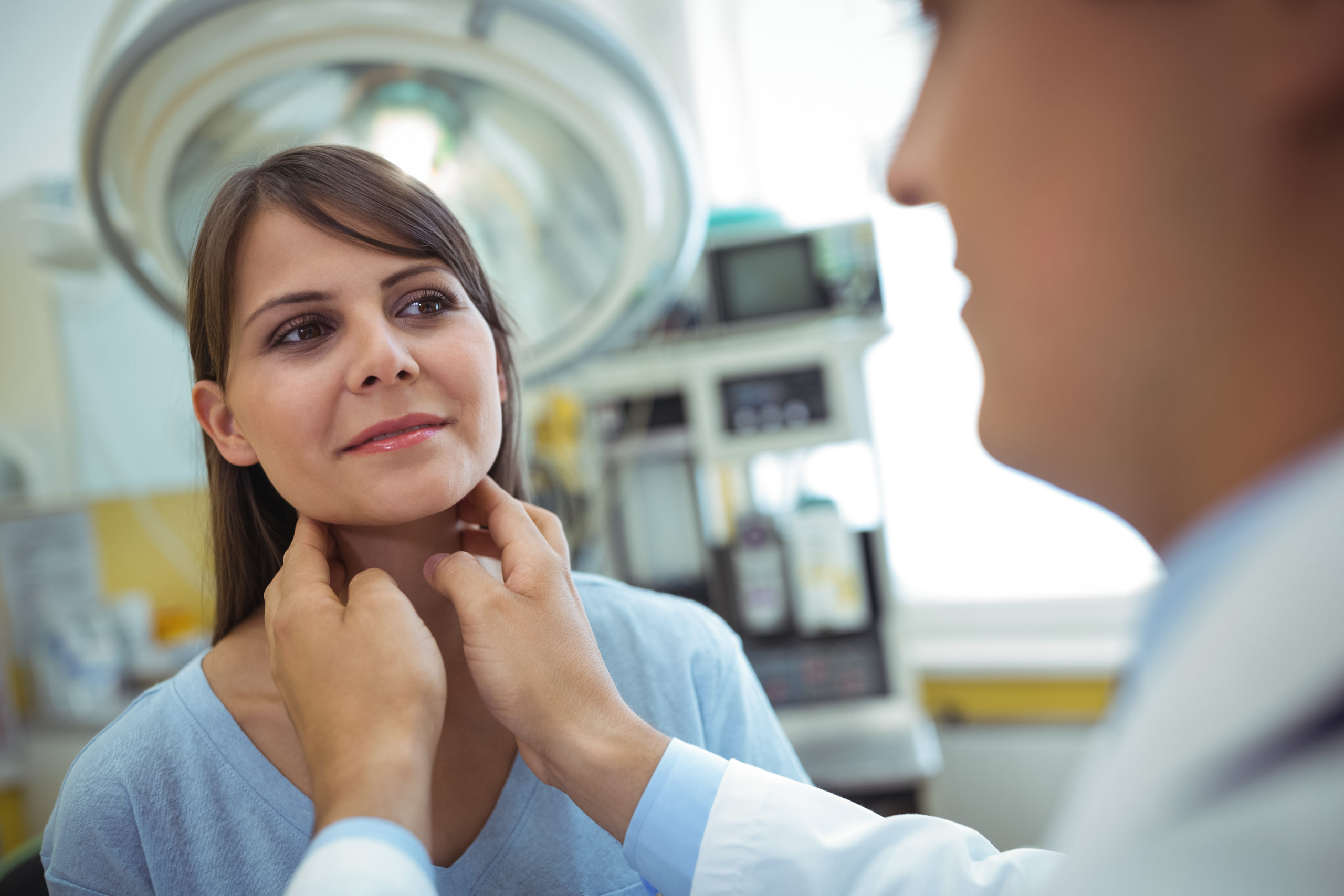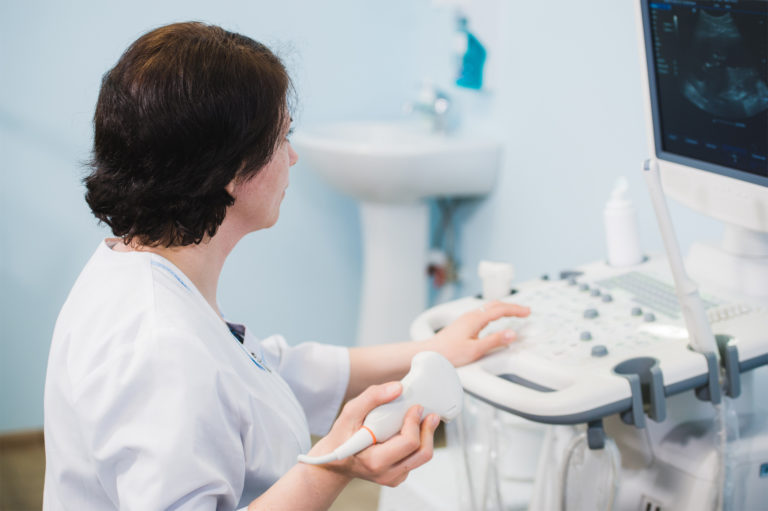THYROID DISORDERS
Found in both women and men, the thyroid controls a person’s metabolism. It is located in the front of the neck. This gland secretes hormones that govern many of the functions in your body, such as the way the body uses energy, consumes oxygen and produces heat. Thyroid disorders typically occur when this gland releases too many or too few hormones. An overactive (hyperthyroidism) or underactive (hypothyroidism) thyroid can lead to a wide range of health problems.

Hyperthyroidism:
Is a condition in which the thyroid gland is overactive and produces too much thyroid hormone. If left untreated, hyperthyroidism can lead to other health problems. Some of the most serious involve the heart (rapid or irregular heartbeat, congestive heart failure) and the bones (osteoporosis). People with mild hyperthyroidism or the elderly may not have any symptoms at all. Signs and symptoms of hyperthyroidism include: Feeling too hot, Increased sweating, Muscle weakness, Trembling hands, Rapid heartbeat, Tiredness/fatigue, Weight loss, Diarrhea or frequent bowel movements, Irritability and anxiety, Eye problems, such as irritation or discomfort, Menstrual irregularities, Infertility.
Causes of hyperthyroidism includes: Graves’ Disease: Is the most common cause of hyperthyroidism. It occurs when the immune system attacks the thyroid gland, causing it to enlarge and make too much thyroid hormone. It is chronic (long-term) and typically runs in families with a history of thyroid disease or other autoimmune conditions. Some people with Graves’ disease also develop swelling behind the eyes that causes the eyes to bulge outward. Thyroid Nodules: Lumps on the thyroid gland that may secrete too much thyroid hormone. Subacute thyroiditis: A painful inflammation of the thyroid typically caused by a virus Lymphocytic thyroiditis: A painless inflammation caused by lymphocytes (a type of white blood cell) inside the thyroid. Postpartum thyroiditis: Thyroiditis that develops shortly after pregnancy. Treatment for hyperthyroidism will depend on its cause, your age and physical condition, and how serious your thyroid problem is. Available treatments include antithyroid medications, radioactive iodine, surgery and beta-blocker.

Hypothyroidism:
Is the most common thyroid disorder. It occurs more often in women and people over age 60. Hypothyroidism tends to run in families. In adults, Hashimoto’s disease is the most common cause of hypothyroidism in industrialized countries (iodine deficiency is the most common cause in the rest of the world). In Hashimoto, your immune system attacks and damages your thyroid, so it can’t make enough thyroid hormone. Hypothyroidism can also be caused by radioactive iodine treatment or surgery on the thyroid gland, which are used to treat other types of thyroid disorders. Symptoms may include:
- Tiredness/sluggishness
- Mental depression
- Feeling cold
- Weight gain (only 5–10 pounds or 2–4 kg)
- Dry skin and hair, as well as hair loss
- Constipation
- Menstrual irregularities
Hypothyroidism is treated with thyroid hormone medication, taken as a pill. Levothyroxine is the drug of choice. It is a synthetic (laboratory-made) form of T4 that is identical to the T4 the thyroid naturally makes.
Thyroid Nodules:
A thyroid nodule is a growth of thyroid tissue or a fluid-filled cyst that forms a lump in the thyroid gland. Nodules are very common. The chances of developing nodules in the thyroid gland increase as you get older. Symptoms are not common, but a large nodule enough may cause pain or hoarseness or get in the way of swallowing or breathing. Thyroid nodules sometimes be cancerous. The cause of most benign nodules is not known, but they are often found in members of the same family. Worldwide, lack of iodine in the diet is a very common cause of nodules. To gather more information about the nodule, your doctor might recommend one or more of the following tests:
- Fine-needle aspiration biopsy uses a thin needle to remove cells or fluid samples from the nodule. This test may be recommended if the nodule is larger than 1.0 centimeters or if it has any concerning features on ultrasound. This test is very helpful for identifying cancerous or “suspicious” nodules.
- Thyroid ultrasound is used to get an exact picture of the thyroid and see if the nodule is solid or filled with fluid (cystic). Although this test cannot tell if the nodule is cancerous, it is very useful to guide the needle to remove (aspirate) cells from nodules. This procedure is called “ultrasound-guided fine needle aspiration biopsy.”
- Thyroid scan uses a small amount of radioactive iodine and a special camera to get a picture of the thyroid and learn if the nodule is overactive or under active. This procedure is usually done when the blood tests show hyperthyroidism, or too much thyroid hormone.

